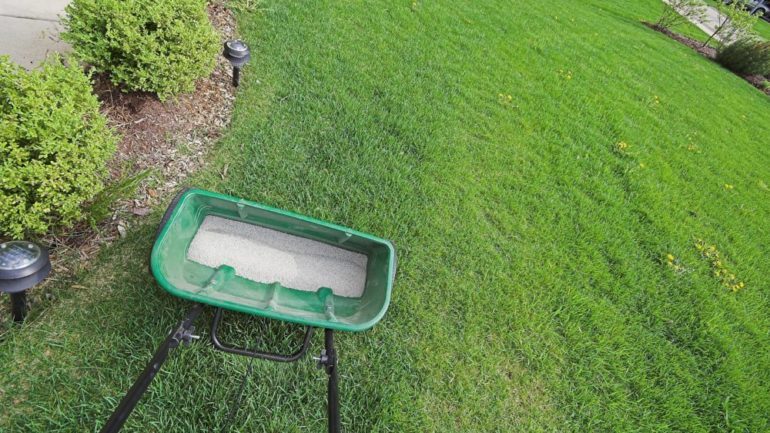Even though homeowners get to take the colder months off from lawn mowing, keeping your grass in top-notch condition is a year-long job. Here’s what you need to know to keep the grass green on your side of the fence.
Fall Fertilizing
Late fall into early winter is a perfect time to fertilize your lawn. Plants need food and will look much better come springtime if they’ve been fed during the winter. Your grass is still growing, even in the colder months.
Which lawn fertilizer should you use?
A slow-release dry pellet fertilizer is generally recommended. A good start is a 20-5-10 bagged mixture, each number referring to the percentage of nitrogen, phosphate and potassium in the fertilizer. A dry fertilizer is relatively inexpensive and is easily applied by spreading. An alternative to spreading is using fertilizer spikes. The spikes are easy to install but cost more and don’t do a very good job of evenly dispersing the nutrients to the soil.
Spring Fertilizing
When the soil temperature reaches 55 degrees, it’s time for another round of lawn fertilizing, followed by additional feedings every six to eight weeks through October or November. (The soil temperature will reach 55 degrees about mid-April in most areas of the country, but contact your local extension agent for a better estimate in your region.)
What do the lawn pros do?
Lawn care companies offer a variety of services, including mowing, fertilizing, weeding, pest control and aeration. Companies may use spray fertilizers rather than the more common spreading performed by do-it-yourselfers. Prices will vary with frequency of treatment and the size of the lawn, but you can expect to pay $40 to $60 per application. Many companies will offer a teaser rate of $30, if you sign a contract. Get several quotes before signing a contract.
Learn how to keep your lawn healthy all year round with some watering wisdom tips here.


